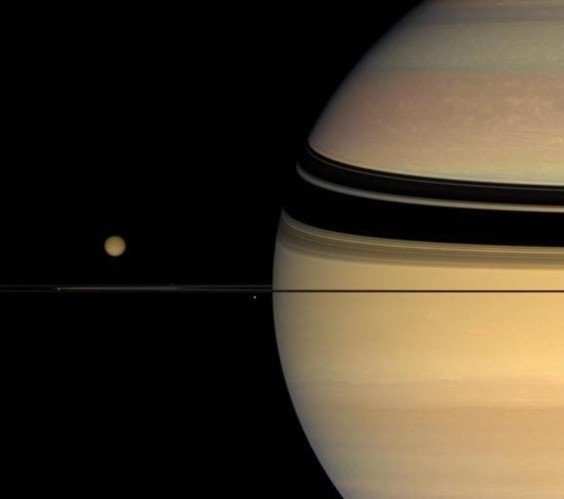Saturn just tightened its grip on the title of the solar system’s moon champion. Scientists recently identified 128 new moons orbiting the gas giant — all irregularly shaped like potatoes — pushing Saturn’s total moon count to a staggering 274.
A Giant Leap in Moon Counting
The discovery came thanks to advanced telescope observations, particularly from the Canada-France-Hawaii Telescope, where astronomers scanned the distant skies with unprecedented clarity. Dr. Edward Ashton, a postdoctoral researcher at Taiwan’s Academia Sinica Institute of Astronomy and Astrophysics, led the research. His team’s findings have left planetary scientists buzzing.
“Sure enough, we found 128 new moons,” Ashton shared, adding, “Based on our projections, I don’t think Jupiter will ever catch up.”
Jupiter, Saturn’s closest rival in moon count, currently boasts 95 moons — a respectable number but now nowhere near Saturn’s massive tally. Even after a recent surge in Jupiter moon discoveries, the gas giant has fallen well behind in this celestial race.

Why Potato-Shaped Moons?
One quirky detail stands out: all the newly discovered moons are oddly shaped, resembling misshapen potatoes rather than perfect spheres. This irregularity comes from their history. These moons are believed to be fragments of larger bodies that collided long ago, breaking apart and leaving behind these jagged, rocky leftovers.
Most of Saturn’s irregular moons fall into three main groups, based on their orbits and origins:
- Gallic moons – Named after Celtic mythology, these moons tend to have prograde orbits, meaning they move in the same direction Saturn rotates.
- Norse moons – Inspired by Norse mythology, this group mostly orbits in the opposite (retrograde) direction, a clue they might have started as captured asteroids.
- Inuit moons – Named after figures from Canadian Inuit legends, these moons have mixed orbits but tend to stay closer to Saturn.
The newly found moons will eventually receive mythological names too, following this same pattern.
How the Moons Were Spotted
The discovery wasn’t a one-night event. Ashton and his team used a method called ‘shift and stack,’ which helps detect faint, slow-moving objects. By combining multiple images and aligning them with Saturn’s motion, they could pick up moons that were previously too dim to notice.
This technique essentially stretches exposure time, giving a clearer view of objects millions of kilometers away. Over a period of months, the team tracked the moons to confirm they weren’t stray asteroids passing by.
What This Means for Astronomy
Saturn now has more moons than all other planets in the solar system combined — a mind-boggling statistic. This surge in moon discoveries highlights just how dynamic and crowded the region around the planet truly is.
But it’s not just about numbers. Each moon tells a story about Saturn’s chaotic past. The irregular shapes and varied orbits suggest a history of violent collisions, gravitational captures, and the relentless pull of the gas giant’s massive gravity.
The International Astronomical Union (IAU) has already recognized the new moons, giving them official designations — strings of letters and numbers for now. The names will follow later, honoring Gallic, Norse, and Inuit deities.
One thing’s for sure: this discovery isn’t just a win for Saturn. It’s a reminder of how much we still have to learn about our cosmic backyard — and that the race to uncover the solar system’s secrets is far from over.
